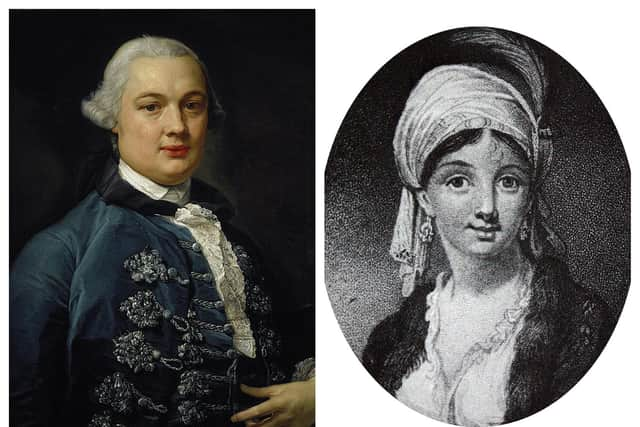The Scots adventurer at the heart of the Ethiopian Royal Court
The obelisk commemorates James Bruce of Kinnaird in Stirlingshire, an enigmatic explorer, a descendant of Robert the Bruce and, for a time, an Ethiopian courtier.
Antonia Dalivalle, an independent fine art researcher, has recently looked at Bruce’s life for Historic Environment Scotland.
Advertisement
Hide AdAdvertisement
Hide AdFollowing a Grand Tour of Europe, Bruce headed to Ethiopia between 1768 and 1772 to collect pictures of antiquities for George III – despite the country being closed to foreigners.


At the time, Emperor Fasilide had shut the borders to prohibit outside influence after an attempt by Portugese Jesuits to convert Christian Ethiopians to Catholicism, Ms Dalivalle said.
James Bruce, however, was undeterred.
Ms Dalivalle said: “Having taught himself Ethiopian languages, including the language of the royal court, Tigrinya, Bruce embarked on a perilous journey into the closed country.
“The explorer apparently charmed and gifted his way through a land usually hostile to foreigners. On his black horse Mizra, he trekked across treacherous terrain and Ethiopia’s flat-topped mountains. He brought a telescope so large it required six men to carry it.
“Bruce arrived at Ethiopia’s imperial capital Gondar during a smallpox epidemic. His knowledge of medicine gained him entry to the court – where he would remain for almost a year.”
Bruce cured the royal family of small pox and he was appointed ‘Lord of the Bedchamber’ as a result.
Ms Dalivalle added: “ Thanks to his ginger hair curled and perfumed in the Ethiopian fashion, Bruce was a baalamaal – a court favourite. In this role, he had a unique insight into the tumultuous politics of Ethiopia.
"He befriended the Machiavellian Regent Prince Ras Michael – and fell in love with Ras Michael’s wife, the beautiful Princess Esther.”
Advertisement
Hide AdAdvertisement
Hide AdBefore Bruce left, Ras Michael gave him a collection of Ethiopian manuscripts to share with the monarchies of Europe. From these, Bruce composed a history of Ethiopia for a European audience: Travels to Discover the Source of the Nile (1790).
In 1772, Bruce returned to London and presented his drawings of African antiquities to George III. Among these was a depiction of the ‘Obelisk of Aksum’ – an Aksumite ‘stele’, a gigantic monolithic monument that marks the tombs of ancient Ethiopian nobility and royalty.
Bruce’s tales of Ethiopia, which were recounted at dinner parties and gossiped about in letters, were ‘met with disbelief’, Ms Dalivalle said.
He was accused of not being the author of his drawings and as a result, the King ordered his images to be hidden from view.
She added: “He became a figure of ridicule, mocked by contemporaries such as Samuel Johnson and James Boswell. Ultimately, he would be laughed out of London.
Ms Dalivalle said “ulterior motives” may have fuelled his rejection from polite society with it later emerging that Bruce belonged to a secret network of British slave trade abolitionists.
Bruce’s life came to a sad end in 1794.
Ms Dalivalle said: “After a lifetime of adventure, Bruce was to suffer death by misadventure. Ever the gallant, rushing to accompany a woman to her carriage, he had a fatal fall down the stairs of his Stirlingshire home.”